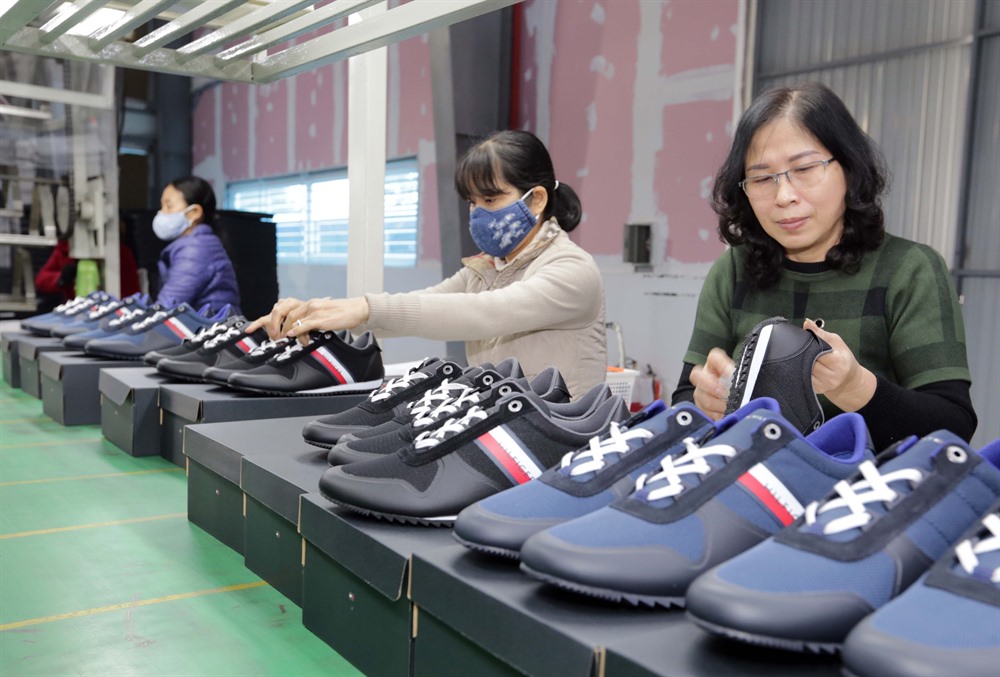 Economy
Economy

Việt Nam now exports 1 billion pairs of shoes per year and the nation is the second largest leather and footwear exporter in the world, according to experts at the Việt Nam Footwear Summit 2019 held in HCM City on Wednesday.
 |
| Shoes are produced for export to Europe at Hải Dương Shoe Joint Stock Company in Hải Dương Province’s Gia Lộc District. Việt Nam is now capable of exporting one billion pairs of shoes each year, but the capacity remains modest compared to the global demand for leather and footwear which is around 23 billion pairs in recent years. — VNA/VNS Photo Trần Việt |
HCM CITY – Việt Nam now exports 1 billion pairs of shoes per year and the nation is the second largest leather and footwear exporter in the world, according to experts at the Việt Nam Footwear Summit 2019 held in HCM City Wednesday.
Diệp Thành Kiệt, vice chairman of the Việt Nam Leather and Footwear Association (Lefaso), said Việt Nam follows just China in leather and footwear exports with more than 1 billion pairs of shoes each year.
From now until 2025, Việt Nam’s footwear industry is still competing well in terms of labour costs, per capita income, economic policies and export markets, he said.
China has continued its policy on reducing investment incentives in the textiles, garment and footwear sectors to focus on high-tech industries so contracts for processing footwear and bags would continue moving from China to Việt Nam, taking advantage of opportunities from the Comprehensive and Progressive Agreement for Trans-Pacific Partnership (CPTPP) , Kiệt said.
According to experts at the forum, the global demand for leather and footwear in recent years has reached about 23 billion pairs. Shoes are mainly produced in 10 countries, including China, India, Việt Nam and Indonesia.
The experts said Việt Nam’s leather and footwear industry needs to expand its export markets. The industry must use new technologies and environmentally-friendly materials to increase market shares in fastidious markets.
In addition, many global shoe brands have moved their production from China to other countries, mainly Indonesia, due to many reasons, including the US-China trade war, according to the experts.
Therefore, Vietnamese enterprises need to understand the Government’s support policy and other advantages such as 55 per cent of the population in working age, to find opportunities on expanding production of export products.
Việt Nam has signed many free trade agreements (FTAs) or bilateral and multilateral economic agreements with many CPTPP member countries such as Japan, Malaysia, Singapore and Brunei.
Meanwhile, the localisation rate in the industry has increased rapidly, reaching 50 per cent. With this rate, rules of origin under commitments of the agreements are not a big obstacle to domestic footwear enterprises in enjoying preferential tariffs, according to Lefaso.
The local footwear industry’s export revenue to CPTPP member markets is expected to increase by 10-15 per cent in 2019 because of high reduction in tariffs and other regulations in the CPTPP that became effective in Việt Nam earlier this year, Phan Thị Thanh Xuân, vice chairwoman and general secretary of Lefaso, said on the sidelines of the forum.
The CPTPP will also help Việt Nam attract more foreign direct investment (FDI) to the footwear sector to build a region of producing auxiliary materials in Việt Nam and to support domestic enterprises in gradually joining the global supply chain.
According to Lefaso, the leather and footwear industry will increase the localisation rate to 60 per cent from 50 per cent at present. Meanwhile, leather and footwear exports will rank fourth and export bags will stand 10th among the 10 key export categories of the economy.
The total export value of the leather and footwear industry in 2018 reached nearly US$20 billion, up 8.3 per cent year on year.
The industry has targeted to gain a growth rate of 10 per cent in the total export value this year to $21.5-22 billion, according to the association. — VNS